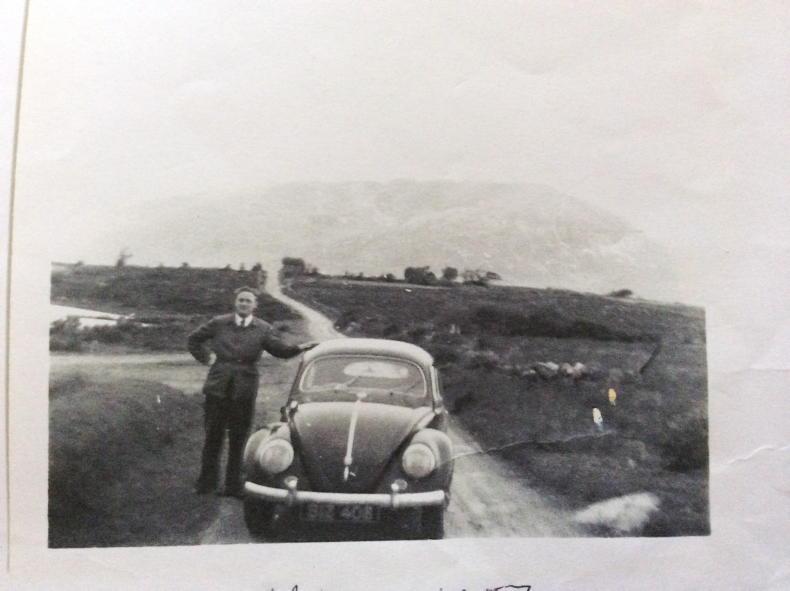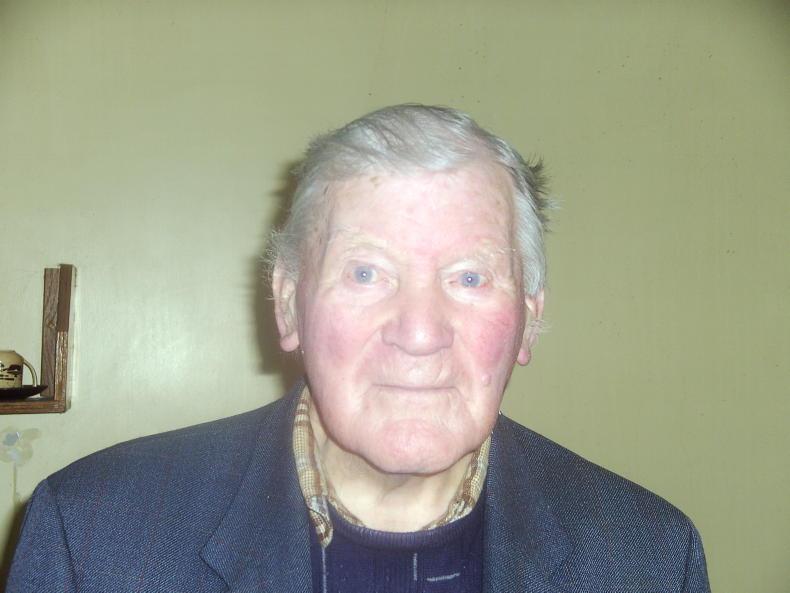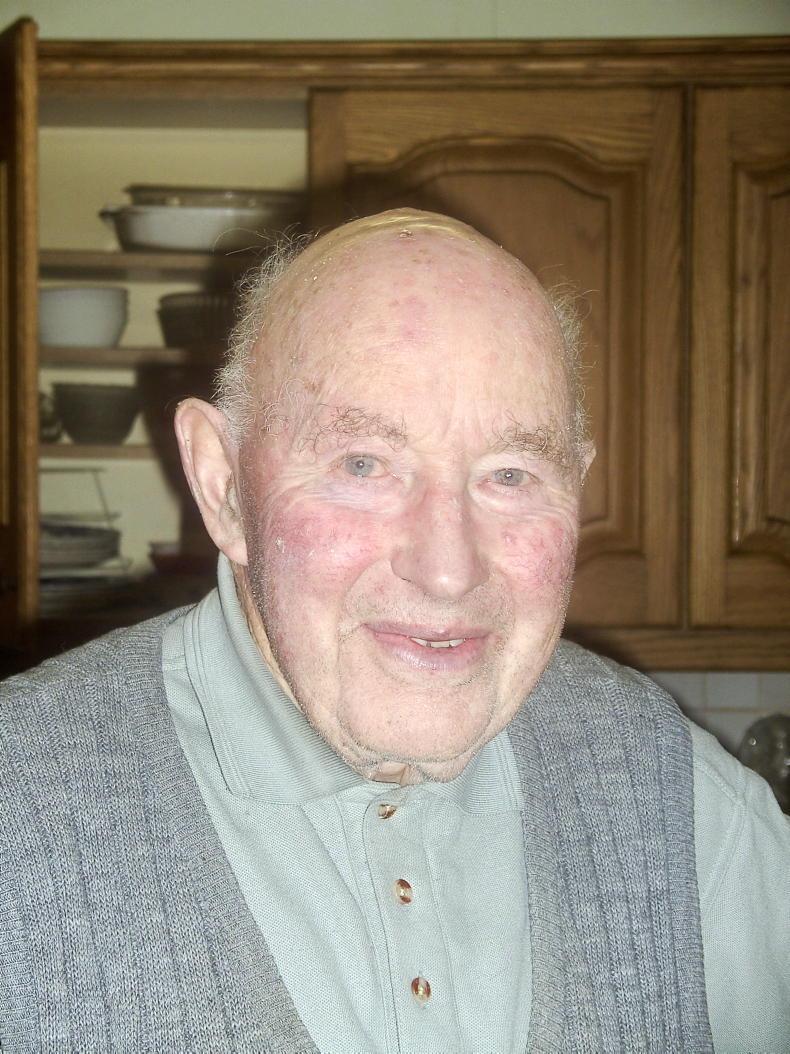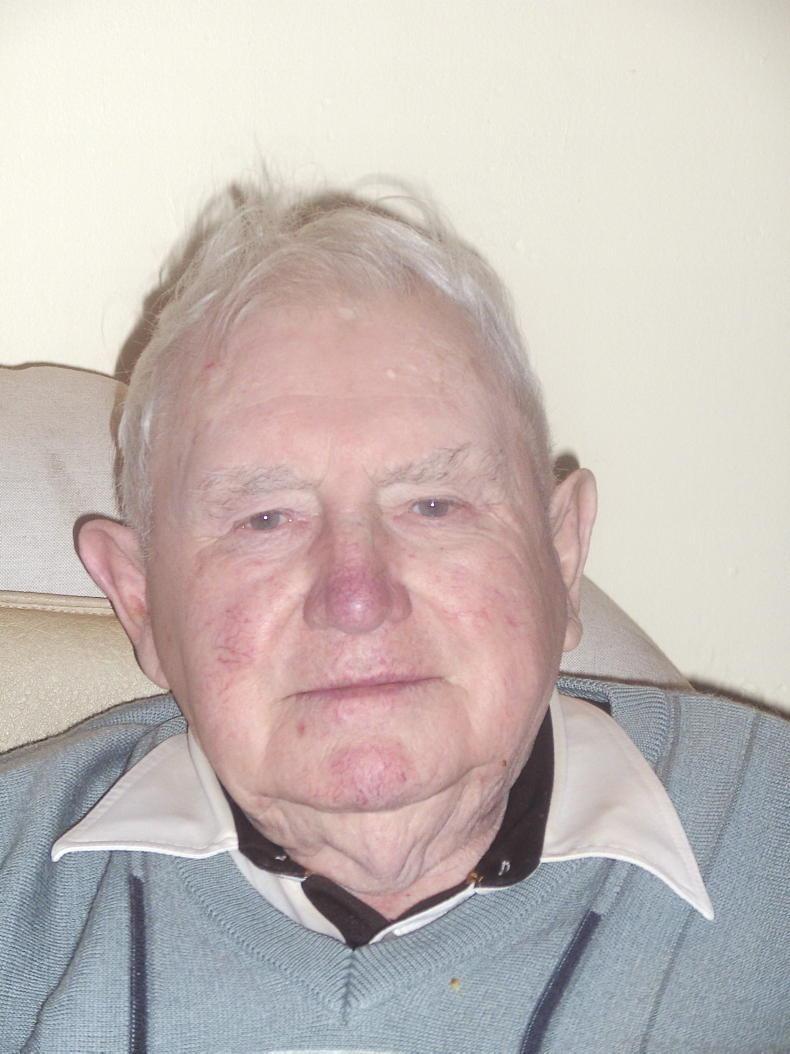During the early decades of the 20th century, the veterinary surgeon was rarely called upon to treat farm animals other than the horse.
Because of their college education, where instruction was predominantly on the anatomy of the horse, vets were seen as no more than ‘horse doctors’.
For the country vet, the most lucrative equine practice was castrating farmers’ colts, at 10 shillings each, especially as up to 20 animals from a district were brought to a pre-arranged location.
Regarding cattle practice, almost every townland had ‘handy-men’ who, through intelligence, experience and observation were adept at common veterinary procedures such as calvings or castrations.
Veterinary surgeon, Pakie Ryan, was complimentary of the many cattle doctors who practised around Newport, Co Tipperary, highlighting that these individuals could replace a prolapsed uterus in a cow as efficiently as any vet.
These local practitioners were part of a close-knit community, were trusted as such, and being part of the ‘comharing’ or meitheal system, expected no monetary payment.
Tom Scanlon, a second-generation Limerick cow doctor who was born in 1923, described how a neighbouring farmer, whose horse he cured, cut his hay later in the summer with that same horse.
In contrast, herdowners often viewed the college-trained vet with suspicion; as an outsider, trying to force new, unwanted, methods on the farmer, who continued to live in a world of tradition and superstition.
At any rate vets were scarce. Only 306 were listed in the first Veterinary Register of Saorstát Éireann, of 1933. Ned Fitzgerald, a farmer from Tournafulla, in west Limerick, made the point that in the 1930s his cousin Donal, a local handyman, was always busy “because the vets hadn’t come into our area at the time”.
These were the days of the Anglo-Irish economic war and Ned concluded that, because cattle prices were so poor, even if vets were available, the local farmers could not afford them.
Farmers and handy men did whatever they could to save an animal, whether by evoking religion or magic, or by concocting medicines made from either locally sourced botanicals or from exotically named ingredients bought from the chemist.

Jim Watkins, with his Volkswagen Beetle, Castlebar, 1957.
Then, as Donal O’Connor of Tarbert, Co Kerry, put it, “if the animal recovered, the cure had worked; if not, it was God’s will”.
Progress
In his memoir, Pat Daly, a Mayo vet, wrote that even in the 1940s the limited instruction given on diseases of cattle, sheep and pigs meant that new graduates of the Dublin Veterinary School were “inexperienced and ill-equipped” to deal with many of the problems they encountered on entering general practice.
However, as equine practice had declined, in order to survive, these new graduates needed to be more adventurous than those of the previous generation in confronting unfamiliar situations.

Mick Flanagan from Brosna, Co Kerry.
Mick Flanagan, who qualified in 1946 and practised in Brosna, Co Kerry, recalled that his graduation coincided with a prolonged period of wet weather that resulted in fodder shortages and more sickness in cattle than normal.
“Everything I came across was new… so I had to depend on my own intuition,” he remarked.
One of the procedures carried out by Flanagan was a bovine caesarean section, which he claimed he had never experienced in college.
Prior to the mid-20th century, the prognosis from on-farm caesareans was poor; both the cow and calf generally died. As anaesthetics became more accessible, the procedure came into wider use, with greatly improved survival rates.
Many of the older vets were reluctant to engage in complicated surgeries.
Paddy Nolan from Kilrush recalled performing the first C-section in south Clare. He said that those were the early days of bovine abdominal surgery and the older vets in the district were glad to “refer any such case to me”.
Changing world
The introduction of compulsory TB testing and the development of new, effective drugs such as penicillin changed the farmers’ perception of vets and they soon became an integral part of the farming sector.
This increased role coincided with improvements in the national infrastructure and the gradual modernisation of rural Ireland.
At the Veterinary Council of Ireland dinner in January 1947, the Minister for Agriculture, James Ryan, predicted that the vet could look forward to “electricity, hot running water, telephones and other amenities on the farm in the not-too-distant future”.
Over the next two decades, these amenities gradually arrived, but they were badly wanted as conditions on farms were extremely basic.
Renowned Nenagh vet Jack Powell told a great story of asking a farmer for light and hot water.

Nenagh vet Jack Powell.
This was in order to treat a cow with a prolapsed uterus.
On the farmer’s arrival back with a candle in a jam-jar and a small basin of water, Powell growled: “I am not going to bloody shave myself.”
There was good reason for his frustration; simply having light and the facility to quickly boil water for an operation usually meant a more positive outcome. Having drugs that worked also helped.
How penicillin made gods of vets
Before the 1940s, the vet could do relatively little for his or her patients in terms of medication.
Like the handyman, various concoctions of common ingredients such as turpentine, copper sulphate, salt and treacle, were administered. These remedies, that in themselves might not have effected a cure, had a purgative effect that relieved the animal.

Jim White from Patrickswell, Co Limerick.
However, in the aftermath of World War II, new drugs capable of fighting against hitherto fatal disease, became available to the vet.
Sulfa-drugs, such as M&B 693, were quickly superseded by penicillin, which according to both farmers and vets immediately changed veterinary practice.
With drugs that worked, the vet was now in a position to supplant the traditional local practitioner.
Mick Flanagan claimed that, on its introduction, penicillin “was curing everything”. Vinnie Houlihan from Dingle described the drug as “the big thing…the main one”.
Mattie O’Dowd, a west Kerry farmer, highlighted the importance of penicillin in cementing the vets’ position. “It meant the difference between losing an animal and not losing the animal,” he said.
Pa Smyth from Cappamore reckoned that the wonder drug lifted cure rates to 90%. This period also saw the first major breakthrough in parasite treatments, as well as the development of vaccines and new diagnostic aids.
‘Get over the illness by itself’
John Pierce of Listowel conceded that before the new drugs the veterinary surgeon was “only helping the animal to get over the illness by itself”.
However, as mortality rates dropped dramatically, the veterinary surgeon “gained a new status”, he maintained.
Paddy Nolan of Kilrush concurred and noted that his predecessor in the town, Joe O’Farrell, commenced practice in 1948 armed with penicillin, an injection for red water and a blackleg vaccine. Nolan imagined that any one of those three was “enough to make him king, but to have the three of them together made him God”.
TB eradication was a 1950s ‘gravy train’
The Bovine Tuberculosis (TB) Eradication Scheme, which ultimately became compulsory in 1957, had a two-fold positive effect on veterinary practice in that it proved highly lucrative but also introduced the vet to new clients.
Veterinary surgeons variously described testing as “a gravy train for vets”, “made a big difference to our bank balances and pockets” or was likened to “winning the lottery”.
James Ironside, who arrived in Ennistymon in 1959 to assist Matty McDonough with the testing, claimed that because of the TB scheme Irish country vets “were never as flush with money”.
Vets were buying Mercedes cars in the 1950s, even though “money was tight”, Ironside recalled.
Ironside was earning £10 a week in Britain and said that he relocated fuelled by rumours that TB testing in Ireland offered a ten-fold salary.

East Clare vet John Blake.
John Blake said he quickly built up a relationship with herdowners of substantial holdings around Tulla who had “never even seen a vet”. According to Joe Dineen, the TB scheme was instrumental in the rapid growth of his small rural practice in Rathmore, Co Kerry.
When he qualified in 1947, he was rarely consulted as the majority of the locals had hitherto no exposure to a veterinary surgeon. The scheme introduced him to a new clientele who “got used to you” and got used to “calling the vet”.
The regular payment from the Department was also useful, he conceded. However, these payments were usually hard earned.
TB testing equipment was initially unreliable and handling facilities were primitive.
Mick Flanagan always employed helpers to assist with the handling of the cattle and remarked that “your life was in your hands at times because you met wild animals”.
Dairy cows were normally tied but other stock, mostly horned, were running loose in small, dark houses.
Catherine Talty, of Mullagh, Co Clare, told a great story of where the vet arrived to a meitheal who were ready to restrain the cattle despite the availability of a newly installed “cattle crush”.
On enquiring about the cattle crush, the vet was told it was “only put in for show”.
John Flaherty is a farmer and historian from Kilflynn, Co Kerry. This article is drawn from interviews conducted with over 60 individuals, the majority of whom cared for farm animals from the 1930s to the 1980s. The interviewees ranged in age from 41 to 99 and included 19 veterinary surgeons, 17 of whom were retired.
During the early decades of the 20th century, the veterinary surgeon was rarely called upon to treat farm animals other than the horse.
Because of their college education, where instruction was predominantly on the anatomy of the horse, vets were seen as no more than ‘horse doctors’.
For the country vet, the most lucrative equine practice was castrating farmers’ colts, at 10 shillings each, especially as up to 20 animals from a district were brought to a pre-arranged location.
Regarding cattle practice, almost every townland had ‘handy-men’ who, through intelligence, experience and observation were adept at common veterinary procedures such as calvings or castrations.
Veterinary surgeon, Pakie Ryan, was complimentary of the many cattle doctors who practised around Newport, Co Tipperary, highlighting that these individuals could replace a prolapsed uterus in a cow as efficiently as any vet.
These local practitioners were part of a close-knit community, were trusted as such, and being part of the ‘comharing’ or meitheal system, expected no monetary payment.
Tom Scanlon, a second-generation Limerick cow doctor who was born in 1923, described how a neighbouring farmer, whose horse he cured, cut his hay later in the summer with that same horse.
In contrast, herdowners often viewed the college-trained vet with suspicion; as an outsider, trying to force new, unwanted, methods on the farmer, who continued to live in a world of tradition and superstition.
At any rate vets were scarce. Only 306 were listed in the first Veterinary Register of Saorstát Éireann, of 1933. Ned Fitzgerald, a farmer from Tournafulla, in west Limerick, made the point that in the 1930s his cousin Donal, a local handyman, was always busy “because the vets hadn’t come into our area at the time”.
These were the days of the Anglo-Irish economic war and Ned concluded that, because cattle prices were so poor, even if vets were available, the local farmers could not afford them.
Farmers and handy men did whatever they could to save an animal, whether by evoking religion or magic, or by concocting medicines made from either locally sourced botanicals or from exotically named ingredients bought from the chemist.

Jim Watkins, with his Volkswagen Beetle, Castlebar, 1957.
Then, as Donal O’Connor of Tarbert, Co Kerry, put it, “if the animal recovered, the cure had worked; if not, it was God’s will”.
Progress
In his memoir, Pat Daly, a Mayo vet, wrote that even in the 1940s the limited instruction given on diseases of cattle, sheep and pigs meant that new graduates of the Dublin Veterinary School were “inexperienced and ill-equipped” to deal with many of the problems they encountered on entering general practice.
However, as equine practice had declined, in order to survive, these new graduates needed to be more adventurous than those of the previous generation in confronting unfamiliar situations.

Mick Flanagan from Brosna, Co Kerry.
Mick Flanagan, who qualified in 1946 and practised in Brosna, Co Kerry, recalled that his graduation coincided with a prolonged period of wet weather that resulted in fodder shortages and more sickness in cattle than normal.
“Everything I came across was new… so I had to depend on my own intuition,” he remarked.
One of the procedures carried out by Flanagan was a bovine caesarean section, which he claimed he had never experienced in college.
Prior to the mid-20th century, the prognosis from on-farm caesareans was poor; both the cow and calf generally died. As anaesthetics became more accessible, the procedure came into wider use, with greatly improved survival rates.
Many of the older vets were reluctant to engage in complicated surgeries.
Paddy Nolan from Kilrush recalled performing the first C-section in south Clare. He said that those were the early days of bovine abdominal surgery and the older vets in the district were glad to “refer any such case to me”.
Changing world
The introduction of compulsory TB testing and the development of new, effective drugs such as penicillin changed the farmers’ perception of vets and they soon became an integral part of the farming sector.
This increased role coincided with improvements in the national infrastructure and the gradual modernisation of rural Ireland.
At the Veterinary Council of Ireland dinner in January 1947, the Minister for Agriculture, James Ryan, predicted that the vet could look forward to “electricity, hot running water, telephones and other amenities on the farm in the not-too-distant future”.
Over the next two decades, these amenities gradually arrived, but they were badly wanted as conditions on farms were extremely basic.
Renowned Nenagh vet Jack Powell told a great story of asking a farmer for light and hot water.

Nenagh vet Jack Powell.
This was in order to treat a cow with a prolapsed uterus.
On the farmer’s arrival back with a candle in a jam-jar and a small basin of water, Powell growled: “I am not going to bloody shave myself.”
There was good reason for his frustration; simply having light and the facility to quickly boil water for an operation usually meant a more positive outcome. Having drugs that worked also helped.
How penicillin made gods of vets
Before the 1940s, the vet could do relatively little for his or her patients in terms of medication.
Like the handyman, various concoctions of common ingredients such as turpentine, copper sulphate, salt and treacle, were administered. These remedies, that in themselves might not have effected a cure, had a purgative effect that relieved the animal.

Jim White from Patrickswell, Co Limerick.
However, in the aftermath of World War II, new drugs capable of fighting against hitherto fatal disease, became available to the vet.
Sulfa-drugs, such as M&B 693, were quickly superseded by penicillin, which according to both farmers and vets immediately changed veterinary practice.
With drugs that worked, the vet was now in a position to supplant the traditional local practitioner.
Mick Flanagan claimed that, on its introduction, penicillin “was curing everything”. Vinnie Houlihan from Dingle described the drug as “the big thing…the main one”.
Mattie O’Dowd, a west Kerry farmer, highlighted the importance of penicillin in cementing the vets’ position. “It meant the difference between losing an animal and not losing the animal,” he said.
Pa Smyth from Cappamore reckoned that the wonder drug lifted cure rates to 90%. This period also saw the first major breakthrough in parasite treatments, as well as the development of vaccines and new diagnostic aids.
‘Get over the illness by itself’
John Pierce of Listowel conceded that before the new drugs the veterinary surgeon was “only helping the animal to get over the illness by itself”.
However, as mortality rates dropped dramatically, the veterinary surgeon “gained a new status”, he maintained.
Paddy Nolan of Kilrush concurred and noted that his predecessor in the town, Joe O’Farrell, commenced practice in 1948 armed with penicillin, an injection for red water and a blackleg vaccine. Nolan imagined that any one of those three was “enough to make him king, but to have the three of them together made him God”.
TB eradication was a 1950s ‘gravy train’
The Bovine Tuberculosis (TB) Eradication Scheme, which ultimately became compulsory in 1957, had a two-fold positive effect on veterinary practice in that it proved highly lucrative but also introduced the vet to new clients.
Veterinary surgeons variously described testing as “a gravy train for vets”, “made a big difference to our bank balances and pockets” or was likened to “winning the lottery”.
James Ironside, who arrived in Ennistymon in 1959 to assist Matty McDonough with the testing, claimed that because of the TB scheme Irish country vets “were never as flush with money”.
Vets were buying Mercedes cars in the 1950s, even though “money was tight”, Ironside recalled.
Ironside was earning £10 a week in Britain and said that he relocated fuelled by rumours that TB testing in Ireland offered a ten-fold salary.

East Clare vet John Blake.
John Blake said he quickly built up a relationship with herdowners of substantial holdings around Tulla who had “never even seen a vet”. According to Joe Dineen, the TB scheme was instrumental in the rapid growth of his small rural practice in Rathmore, Co Kerry.
When he qualified in 1947, he was rarely consulted as the majority of the locals had hitherto no exposure to a veterinary surgeon. The scheme introduced him to a new clientele who “got used to you” and got used to “calling the vet”.
The regular payment from the Department was also useful, he conceded. However, these payments were usually hard earned.
TB testing equipment was initially unreliable and handling facilities were primitive.
Mick Flanagan always employed helpers to assist with the handling of the cattle and remarked that “your life was in your hands at times because you met wild animals”.
Dairy cows were normally tied but other stock, mostly horned, were running loose in small, dark houses.
Catherine Talty, of Mullagh, Co Clare, told a great story of where the vet arrived to a meitheal who were ready to restrain the cattle despite the availability of a newly installed “cattle crush”.
On enquiring about the cattle crush, the vet was told it was “only put in for show”.
John Flaherty is a farmer and historian from Kilflynn, Co Kerry. This article is drawn from interviews conducted with over 60 individuals, the majority of whom cared for farm animals from the 1930s to the 1980s. The interviewees ranged in age from 41 to 99 and included 19 veterinary surgeons, 17 of whom were retired.











 This is a subscriber-only article
This is a subscriber-only article










SHARING OPTIONS: